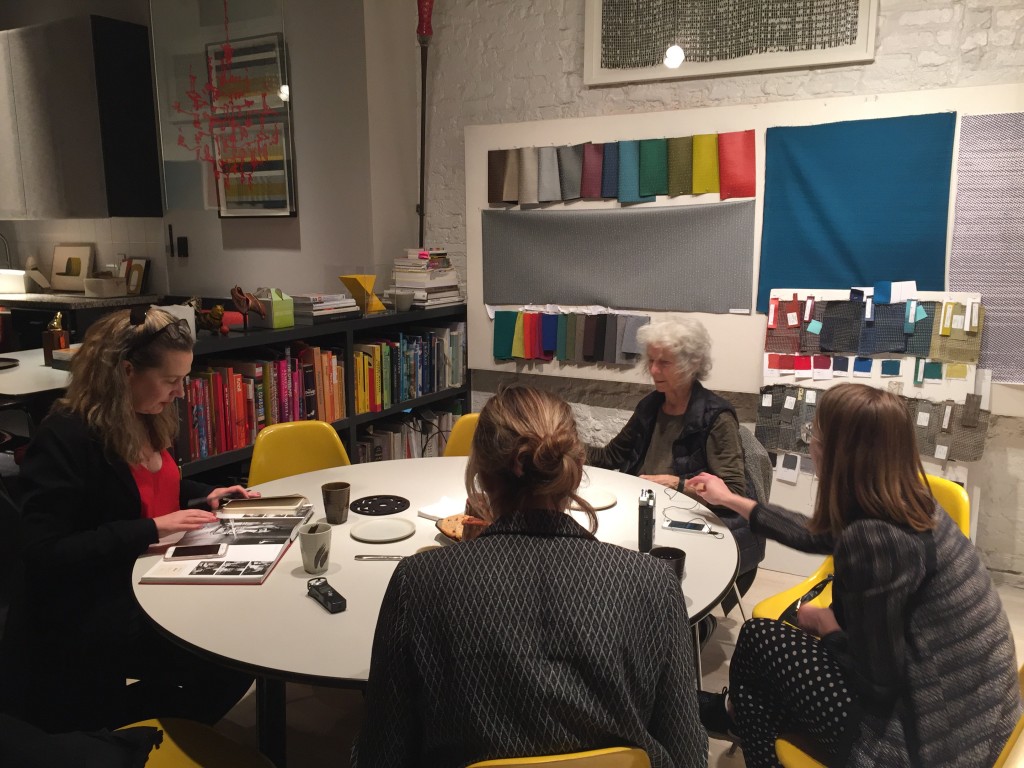Simone Forti: on Robert Whitman’s “American Moon”
February 15, 2016

On December 11, 2015 I accompanied Simone Forti to the site of the former Reuben Gallery, known for its Happenings series—beginning with Kaprow’s 18 Happenings in 6 Parts (1959). Forti was the only woman artist ever presented as part of the Happenings series at the Reuben Gallery, first located on 4th Avenue and 10th Street, then relocated to 3rd Street, east of 2nd Avenue, in 1960-61. Forti introduced her See Saw and Rollers at the Reuben Gallery, December 16 – 18, 1960. These were the first of her seminal Dance Constructions, a series of groundbreaking dance/sculptures that influenced minimalist artists for the next two decades.
Over this past year I researched the site on Third Street in the East Village and learned that it is currently the studio of textile artist Suzanne Tick. I arranged for Forti to visit, accompanied by Ana Janevski, associate curator, MoMA’s Department of Media and Performance Art. MoMA recently acquired Forti’s Dance Constructions. We are developing a collaboration between Forti, Danspace Project and MoMA. Here, Forti describes her performance in Robert Whitman’s American Moon, which was performed at the Reuben Gallery, November 29 – December 4, 1960.
-Judy Hussie-Taylor
It was very exactly choreographed. We each were doing moments of performance where we were visible, and times of pulling ropes and turning flashlights on or off, or turning the vacuum cleaner on so it would inflate this inflatable piece of thin plastic—dry cleaner stuff. So that got inflated and then Whitman and I leaned on it and then rolled across the floor. Then I probably had to hand somebody something when I got there and they probably ran across the top and pulled a pulley. And I remember one movement [at one point] that I had to do, which was visible, was a little bit like planking—like you get completely straight—but my hands and my toes were keeping me off the ground and I was just sort of—the directions were to “heap around,” so I was planking and “heaping” the plank around.
There were moments when the audience was in these—I guess there were six cubbies. Each of them was like a little theater of its own—looking in towards the center. They each must have had about four chairs wide and three chairs deep. Each cubby had, again, one of these plastic sheets hanging in front, and pieces of paper taped to that, regularly, and a little Super 8 film projector was projecting a scene that Bob had shot in the woods in New Jersey. We were kind of parading through the woods in costumes and holding up things. And then also getting soaked climbing up this waterfall. It’s amazing that he wanted six projectors. I mean, they were all projecting the same film. Everyone saw the same thing but in their own separate little theater.
Then at one moment, somebody’s upstairs pulling some strings and that little screen that’s made up of these pieces of paper taped to the plastic—that gets rolled up and pulled up, and [the audience] sees into the center. They see each other. After they saw this little movie, and the screens came up, then we came parading through, in the same costumes [they had seen in the film], into what had become the stage area. Then there was the blowing up of this inflated plastic in the center and those activities. At a certain point, some of us were on the structure over the heads of the audience and we’d pull open these little domes that each of the little theaters had. We’d pull them open and closed, so there’s that activity over their heads. And then we’re stamping, stomping around, on this structure over their heads. And it’s scary, ‘cause Bob said that he liked to build things that would last just ‘til the end of the show. So it was, you know, iffy. But he knew what he was doing. The last thing that happened was the swing came out and Lucas was, again, “planking” on the swing, only he was face-up.
Simone Forti, December 11, 2015
New York, NY
Edited transcription: Jaime Shearn Coan